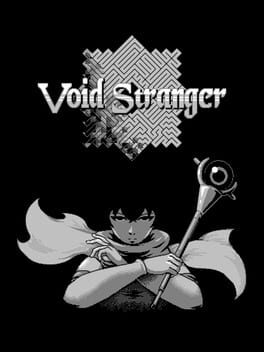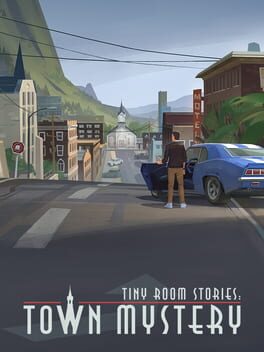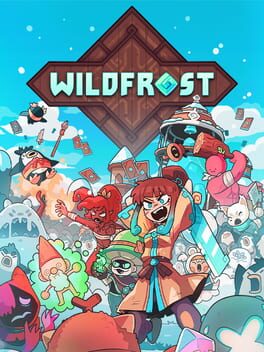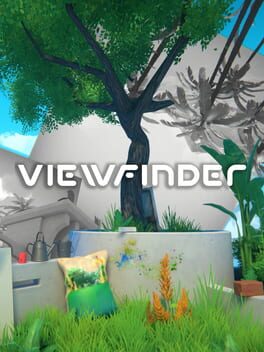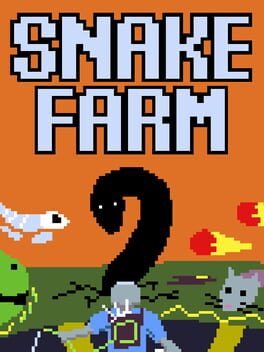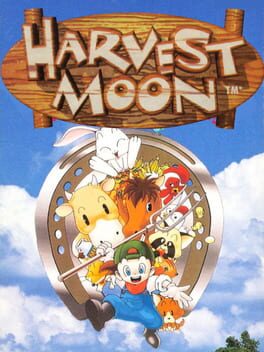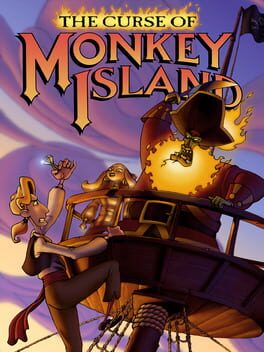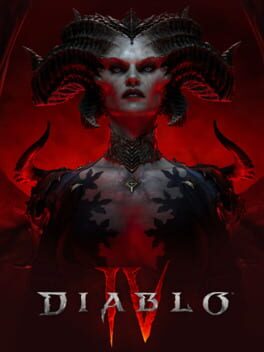nex3
BACKER
2023
"If it feels like you're suffering, you're probably missing a movement item," my friend Aura tells me as I throw myself against a nearly-impossible platforming section. "Oh, I know," I reply, "but what if I can do it anyway?" And, dear reader, I could.
If you play Pseduoregalia and unlock every movement mechanic in the expected order and solve every puzzle using the intended solution, you are experiencing a fundamentally different game than I. To me, this is a game of getting away with something, piecing together the tools you have on hand to sneak through challenges designed for different tools and steal rewards meant for another you in another time. The movement is so deep and so powerful once you push it to its limits that you can go almost anywhere with only a few mechanics.
This makes me wonder: why are there so few 3D games that really focus in on the technical complexity of motion in 3D space? Where is the evolutionary branch of 3D platformers that zoomed in on the platforming instead of the world around it? Did I miss them, or does Pseudoregalia really stand alone?
One thing's for sure: this is going to have the absolute sickest low% speedruns you've ever seen.
If you play Pseduoregalia and unlock every movement mechanic in the expected order and solve every puzzle using the intended solution, you are experiencing a fundamentally different game than I. To me, this is a game of getting away with something, piecing together the tools you have on hand to sneak through challenges designed for different tools and steal rewards meant for another you in another time. The movement is so deep and so powerful once you push it to its limits that you can go almost anywhere with only a few mechanics.
This makes me wonder: why are there so few 3D games that really focus in on the technical complexity of motion in 3D space? Where is the evolutionary branch of 3D platformers that zoomed in on the platforming instead of the world around it? Did I miss them, or does Pseudoregalia really stand alone?
One thing's for sure: this is going to have the absolute sickest low% speedruns you've ever seen.
This splice of a not-quite-idle-game loop onto an RPG superstructure works surprisingly well. It bounces the player back and forth between a storefront where they make their money to a quest-filled overworld where they choose how to wield it to achieve their larger goals. Although the pacing of bouncing between these two halves of the game is a bit uneven at times, both sides are quite fun: shop-tending has just enough demands on your attention to stay engaging well into the endgame, while the overworld is impressively dense and layered for a relatively small game. Frankly, it's more fun to explore a city in Final Profit than in plenty of RPGs with thousands of times its budget.
I can't write a review of this without mentioning the writing, though. It is agonizingly poorly-edited. If you care at all about the correct use of commas or "its" versus "it's", playing this game will be a potent tooth-gritting exercise. It's not just a typo here or there—these mistakes permeate every corner of the extensive dialog, and completely wreck any immersion or attempt to take it seriously. Otherwise likable characters with compelling arcs end up looking like they were written by a middle schooler who lied about their age to sign up for AO3. With a good, thorough copy-edit pass I think this game could be something really magnificent, but as it stands I found it a struggle to push myself through the more text-heavy portions.
I can't write a review of this without mentioning the writing, though. It is agonizingly poorly-edited. If you care at all about the correct use of commas or "its" versus "it's", playing this game will be a potent tooth-gritting exercise. It's not just a typo here or there—these mistakes permeate every corner of the extensive dialog, and completely wreck any immersion or attempt to take it seriously. Otherwise likable characters with compelling arcs end up looking like they were written by a middle schooler who lied about their age to sign up for AO3. With a good, thorough copy-edit pass I think this game could be something really magnificent, but as it stands I found it a struggle to push myself through the more text-heavy portions.
2023
The most Remedy of all Remedy games, this has all the virtues of their last few releases going at full blast but still doesn't manage to escape their flaws. The writing is charming throughout: Sam Lake's dry sense of humor shines through the low-budget TV spots and the glimpses we get of Control's FBC, but it's equally capable of pulling at the player's heartstrings. Particularly for a player invested in the people of Bright Falls and in Alan's own story, there's a lot food here.
The large-scale plot is where the game really fires on all cylinders, though. It's meticulous and intricate, a full-on puzzle box that renders Alan Wake 1's opening quote on horror not having a clear explanation deeply ironic in retrospect. It loops in and around itself, tying knots of astounding beauty, wrapping up the emotional core of the game like a gift for the player.
It even pushes the formal boundaries of what a game can be in a way no AAA studio other than Kojipro has dared to do. I'm deeply thrilled to see full-motion video again after being effectively exiled since the 90s, and absolutely head over heels for the way it's used in Alan Wake II. I can't say much more without risking spoilers, but there were more than a few moments that had me shouting gleefully at the screen.
The only problem is, in grand Remedy tradition, the game isn't actually that fun to play. As incredibly gutsy as the plot and writing is, the game design feels shot through with a deep anxiety about not being "game-y" enough. It's filled with little collectables and largely-irrelevant upgrade trees that just feel banal in juxtaposition with the absolute mastery of the rest of the game.
To be fair, it's solidly an improvement on the previous Alans Wake and particularly on Control's agonizing need to act modern-AAA. The combat is no longer the unmitigated slog of AW1 and AWAN. But neither is it fun, especially with the tight resource constraints and intense awkwardness of trying to fumble with the equipment UI in combat.
Nor do the non-action aspects of the play bear the weight they're asked to. The game's photo-and-string conspiracy board simulator feels like sleepwalking. The case board only asks the player to follow a single well-lit path, placing one piece of "evidence" after another until Saga Anderson voices a fairly obvious deduction. It's just a treadmill, an action to take purely for the sake of having the player do something during exposition. That's not inherently a bad thing from a design perspective, but it feels galling in the broader context of the game. It has a conspiracy board and it asks the player to untangle a complex metaplot, but these two aspects of play are totally disconnected from one another.
This glaring contrast between the mediocre reality and a shining possibility is also what makes the combat so frustrating. Alan Wake 2 takes on the ancillary design trappings of survival horror, with limited resources, inventory grid, and threatening enemies, but it doesn't follow through. In order for those limitations to induce interesting decision points, the game also needs to make it possible not to fight enemies and make a victory at least somewhat permanent. Just dropping them into a shooter with respawning mobs ends up with a frustrating mess.
It's a testament to how fabulous the good parts of this game are that I still consider it truly excellent in spite of its flaws. I'll probably play "The Final Draft", its version of NG+, within a few weeks. But I'm disappointed that I can't endorse the entire game as wholeheartedly as I'd like, and I hope one day Remedy gets as confident with their mechanical design as they are with their writing.
The large-scale plot is where the game really fires on all cylinders, though. It's meticulous and intricate, a full-on puzzle box that renders Alan Wake 1's opening quote on horror not having a clear explanation deeply ironic in retrospect. It loops in and around itself, tying knots of astounding beauty, wrapping up the emotional core of the game like a gift for the player.
It even pushes the formal boundaries of what a game can be in a way no AAA studio other than Kojipro has dared to do. I'm deeply thrilled to see full-motion video again after being effectively exiled since the 90s, and absolutely head over heels for the way it's used in Alan Wake II. I can't say much more without risking spoilers, but there were more than a few moments that had me shouting gleefully at the screen.
The only problem is, in grand Remedy tradition, the game isn't actually that fun to play. As incredibly gutsy as the plot and writing is, the game design feels shot through with a deep anxiety about not being "game-y" enough. It's filled with little collectables and largely-irrelevant upgrade trees that just feel banal in juxtaposition with the absolute mastery of the rest of the game.
To be fair, it's solidly an improvement on the previous Alans Wake and particularly on Control's agonizing need to act modern-AAA. The combat is no longer the unmitigated slog of AW1 and AWAN. But neither is it fun, especially with the tight resource constraints and intense awkwardness of trying to fumble with the equipment UI in combat.
Nor do the non-action aspects of the play bear the weight they're asked to. The game's photo-and-string conspiracy board simulator feels like sleepwalking. The case board only asks the player to follow a single well-lit path, placing one piece of "evidence" after another until Saga Anderson voices a fairly obvious deduction. It's just a treadmill, an action to take purely for the sake of having the player do something during exposition. That's not inherently a bad thing from a design perspective, but it feels galling in the broader context of the game. It has a conspiracy board and it asks the player to untangle a complex metaplot, but these two aspects of play are totally disconnected from one another.
This glaring contrast between the mediocre reality and a shining possibility is also what makes the combat so frustrating. Alan Wake 2 takes on the ancillary design trappings of survival horror, with limited resources, inventory grid, and threatening enemies, but it doesn't follow through. In order for those limitations to induce interesting decision points, the game also needs to make it possible not to fight enemies and make a victory at least somewhat permanent. Just dropping them into a shooter with respawning mobs ends up with a frustrating mess.
It's a testament to how fabulous the good parts of this game are that I still consider it truly excellent in spite of its flaws. I'll probably play "The Final Draft", its version of NG+, within a few weeks. But I'm disappointed that I can't endorse the entire game as wholeheartedly as I'd like, and I hope one day Remedy gets as confident with their mechanical design as they are with their writing.
2023
Playing this game is a process of gradually tuning your mind to its frequency like a radio station, learning the languages it speaks as well as the gaps in what it says, until it feels like your whole body is resonating in harmony with it. It's a constant dance between fascinations: as soon as your mind is wholly absorbed with the first-order tile puzzles, the game zooms out and gets you thinking about the world it takes place in. The moment you start to really dig into the lore, it crashes back in close and reminds you that it's really about the deeply personal love and loss of each of the characters. And to see more of those characters, of course, you must do more sokoban.
It's hard to talk in detail about the game without spoilers, but I'll say this: I filled four pages with notes about this game, spilling over into a spreadsheet, a screenshot folder, and a large collection of video recordings. The expertise with which its layered puzzles are assembled is extraordinary, hitting a perfect difficulty point where you feel like a genius for each solve but (almost) everything feels like it's using the same design language that you can become fluent with. It stands with Riven as one of the best puzzle games I've ever played.
But that's not even the thing I'll remember most about Void Stranger. What will stay with me long after I forget the trick to B213 or the best way to route bulls is the love the characters hold for one another and the fucked up beautiful lengths they'll go to enact it. In the end, the heart of the game is summed up in the words uttered by Eus's statue... which I'll let you discover for yourself.
It's hard to talk in detail about the game without spoilers, but I'll say this: I filled four pages with notes about this game, spilling over into a spreadsheet, a screenshot folder, and a large collection of video recordings. The expertise with which its layered puzzles are assembled is extraordinary, hitting a perfect difficulty point where you feel like a genius for each solve but (almost) everything feels like it's using the same design language that you can become fluent with. It stands with Riven as one of the best puzzle games I've ever played.
But that's not even the thing I'll remember most about Void Stranger. What will stay with me long after I forget the trick to B213 or the best way to route bulls is the love the characters hold for one another and the fucked up beautiful lengths they'll go to enact it. In the end, the heart of the game is summed up in the words uttered by Eus's statue... which I'll let you discover for yourself.
There's just nothing at all here. The writing is dull, sparse, and terribly translated, the puzzles are bog standard escape room fare, and the concept of a "mystery" isn't sold at all by either the narrative or mechanical design. The description suggests that this is supposed to have a "miniatures" vibe to it, but it just comes off as unremarkable low-poly asset pack instead. Charmless and empty.
2019
After coming away from Resident Evil (2002) with the firm belief that the ink ribbon save economy is a genius-tier game mechanic, I couldn't resist starting my first playthrough of Resident Evil 2 (2019) as Claire in hardcore mode. Having done so, I can say with confidence: I was absolutely correct. The mechanical soul of these games is in the risk/reward calculus of limited resources and carefully planned runs. When you're running on the long end of a save and you choose to push a little further, that's the truest terror. When you first set foot in a new room with unknown horrors and everything to lose, that's when the zombies start to feel real.
Even aside from the impeccable mechanics, the vibe of this game is excellent. I lost track of how many times I legitimately jumped at a scare, or started shouting "OH NO OH FUCK" when a zombie came at me unexpectedly. Mr. X is a particularly inspired design element, destroying what scant comfort you can take in routes you thought were safe and violating the sanctity of the central atrium (the first time this happened I fully screamed). Claire is charming and Leon's stupidity plays perfectly into Ada's no-nonsense demeanor.
When I first started playing, a friend told me this was her favorite of all the RE games and remakes. I was skeptical: Resident Evil (2002) has a degree of mechanical purity that seemed impossible to match. But now I think I kind of agree: Hardcore mode brings the same mechanical genius (although part of me misses the compositional artistry of fixed camera and tank controls), while the rest of the game delivers excitement and frights well beyond what I got from the first game. This one is really magnificent.
Even aside from the impeccable mechanics, the vibe of this game is excellent. I lost track of how many times I legitimately jumped at a scare, or started shouting "OH NO OH FUCK" when a zombie came at me unexpectedly. Mr. X is a particularly inspired design element, destroying what scant comfort you can take in routes you thought were safe and violating the sanctity of the central atrium (the first time this happened I fully screamed). Claire is charming and Leon's stupidity plays perfectly into Ada's no-nonsense demeanor.
When I first started playing, a friend told me this was her favorite of all the RE games and remakes. I was skeptical: Resident Evil (2002) has a degree of mechanical purity that seemed impossible to match. But now I think I kind of agree: Hardcore mode brings the same mechanical genius (although part of me misses the compositional artistry of fixed camera and tank controls), while the rest of the game delivers excitement and frights well beyond what I got from the first game. This one is really magnificent.
2023
This absolutely enters my hallowed hall of top-tier roguelike deckbuilders, alongside the Monster Train and the crown jewel Slay the Spire. It captures the specific magic of the form where you create builds that feel more and more unbeatable as you fight enemies that feel more and more unfair. The particular conceit of having the final boss (until the very endgame) be your own last winning party is especially brilliant.
What really pushes this over the top is the art style. It is bursting at the seams with charm, every little character portrait and monster design and background detail just intensely appealing. Who doesn't want to hang out with Big Berry? Who wouldn't save a poor Naked Gnome? For a genre so mechanically focused that it would be 80% as fun with purely abstract symbology (as early access Slay the Spire players are well aware), there was no need to go this hard on making the game this cute. But they did and I'm delighted.
What really pushes this over the top is the art style. It is bursting at the seams with charm, every little character portrait and monster design and background detail just intensely appealing. Who doesn't want to hang out with Big Berry? Who wouldn't save a poor Naked Gnome? For a genre so mechanically focused that it would be 80% as fun with purely abstract symbology (as early access Slay the Spire players are well aware), there was no need to go this hard on making the game this cute. But they did and I'm delighted.
2023
The core mechanic here looks incredible at first, and the first few times you play with it—as well as several of the elaborations that appear throughout the game—are stunning. But the rest of the game just can't bear its weight. The puzzles themselves are fine if by-the-book elaborations on the core conceit, but it quickly becomes clear that the designers struggled to find as much depth as they hoped in it. Perhaps the mechanic is just too complex on its face and as such too difficult to extend into a full game's length.
While you play, you are weighed down by the game's dull writing and ceaseless blandly-positive commentary from the virtual cat that follows you around. If you do take the time to pay attention to the plot, you'll quickly find that it makes no sense: a group of climate researchers created a virtual environment, but they constantly marvel at the "physics-defying wonders" they create within it, as though physics within a simulation of your own design is anything more than you say it is. The player is "caught" in the virtual reality despite an early scene clearly showing them in more of a VR booth than jacked into a headset. It's boring, it's sloppy, and it would be an unambiguously better game if it just presented a series of puzzles without any commentary.
While you play, you are weighed down by the game's dull writing and ceaseless blandly-positive commentary from the virtual cat that follows you around. If you do take the time to pay attention to the plot, you'll quickly find that it makes no sense: a group of climate researchers created a virtual environment, but they constantly marvel at the "physics-defying wonders" they create within it, as though physics within a simulation of your own design is anything more than you say it is. The player is "caught" in the virtual reality despite an early scene clearly showing them in more of a VR booth than jacked into a headset. It's boring, it's sloppy, and it would be an unambiguously better game if it just presented a series of puzzles without any commentary.
2023
I have not played a game in this genre (survivorslike? bullet hell survivor? whatever you want to call it) before, but I picked this one up because I know the creator and because it's all the rage on Cohost. I'm very glad I did. It's a tremendously elegant mix of goofy fun, careful strategy, and that magical build-crafting sweet spot where many different randomly-available options combine to provide both variety and a sense of overwhelming power once you hit your groove.
The first time I made it past 10k points, I spent all of day ten doing nothing but screaming as I scampered away from the crush of Big Worms I had recklessly purchased. The first time I got a score on the top 20 leaderboards (#10 in Hose with 45670 points at time of writing) I felt unstoppable. After only a couple days of play, I have my preferred weapons, my favorite snakes to farm, and challenges I'd like to set myself if the time comes. I don't know what more I could ask from an inexpensive little game.
OIL IS LIFE. LIFE IS MONEY. MONEY IS DEATH.
The first time I made it past 10k points, I spent all of day ten doing nothing but screaming as I scampered away from the crush of Big Worms I had recklessly purchased. The first time I got a score on the top 20 leaderboards (#10 in Hose with 45670 points at time of writing) I felt unstoppable. After only a couple days of play, I have my preferred weapons, my favorite snakes to farm, and challenges I'd like to set myself if the time comes. I don't know what more I could ask from an inexpensive little game.
OIL IS LIFE. LIFE IS MONEY. MONEY IS DEATH.
This is very much a game for a mood where you just want to zone out and perform similar tasks over and over. It is a game of chores. The very premise is that you're stuck in debt slavery doing dangerous labor under awful conditions, and the labor you're doing is the heart of what it is to actually play the game.
There's writing too, and the writing is good—a classic spacepunk satire of capitalism and the bonds it forces us into as it tries to sap everything human from our lives. But it also places the game in an odd position: the steady repetition invites the player to put on an audio book and vibe, but the infrequent moments of dialog and text push in the opposite direction. It asks for a lot of patience, either with not much happening or with abrupt context switches.
After interrupting my playthrough for Armored Core VI, I found myself reluctant to pick this up again. I'm happy to assume that as the levels progress the player gets more and more interesting abilities and complex ships to disassemble, but the repetition of the basic actions of crawling through the ship looking for cut points and popping back for oxygen was just exhausting to think about. Maybe another time, when I need exactly this level of semi-engagement.
There's writing too, and the writing is good—a classic spacepunk satire of capitalism and the bonds it forces us into as it tries to sap everything human from our lives. But it also places the game in an odd position: the steady repetition invites the player to put on an audio book and vibe, but the infrequent moments of dialog and text push in the opposite direction. It asks for a lot of patience, either with not much happening or with abrupt context switches.
After interrupting my playthrough for Armored Core VI, I found myself reluctant to pick this up again. I'm happy to assume that as the levels progress the player gets more and more interesting abilities and complex ships to disassemble, but the repetition of the basic actions of crawling through the ship looking for cut points and popping back for oxygen was just exhausting to think about. Maybe another time, when I need exactly this level of semi-engagement.
1996
There's no two ways about it: this game is tedious. It is a slog during which you do the same time-consuming thing, over and over, day after day. This is punctuated only rarely by interactions with townsfolk, which are inherently limited—especially as the game goes on—by the limited amount of daylight and the overwhelming time it takes to harvest produce.
By no means does that make this a bad game. It's a game about tedium, a set of daily rituals that invites you to incorporate it into your own daily ritual. You could call it a timekiller or you could call it a meditation, but it presents the player with an uncompromisingly austere vision of what "play" looks like and asks: do you want to engage with this?
By no means does that make this a bad game. It's a game about tedium, a set of daily rituals that invites you to incorporate it into your own daily ritual. You could call it a timekiller or you could call it a meditation, but it presents the player with an uncompromisingly austere vision of what "play" looks like and asks: do you want to engage with this?
The plot was the thing I was first sold on in Fires of Rubicon. Although it feels more than a little Dune-esque in the initial outline (factions squabbling over a planet that is the unique source of a precious resource, reportedly even called "melange" at some point in development) the game quickly makes clear that it's not interested in telling a cookie-cutter story. Even when I was struggling mightily with the combat, I was fascinated by the factional intricacies and the way they were portrayed in the game's mission structure.
Once I started my second loop (the game asks for three playthroughs to see all the missions and get the final "true" ending), I was even more impressed: when I or other characters made slightly different decisions, I could see how they ramify throughout the course of the game's plot. As I gain familiarity with the characters, I learned to recognize them earlier and found no small amount of affection for their quirks and foibles.
And as I pushed myself forward, I found myself beginning to really appreciate the combat as well. This didn't happen all at once: I spent pretty much the entire first loop frustrated with the game and with myself for failing to learn its language. I felt like I wasn't making a dent in bosses even when I played around with different builds and strategies, and that I couldn't make progress until I went online and copied specialized bosskiller loadouts from people on Reddit and Discord.
But eventually, reading these online resources and chatting with my friend Molly who was several steps ahead of me in the game, I realized something: From Software has always made their game bearing not just its own mechanics in mind, but the way its players will engage with it and each other. They are heavily influenced by classics like The Tower of Druaga, laden with ideas and secrets that can only be found and shared by an entire arcade's worth of players working together. I had thought of myself as failing by looking at these online resources, but From is well aware that they're releasing the game in an age of wikis and group chats. I was doing just what I was supposed to.
I still think there are some tweaks that could be made to make more different builds more viable against more bosses, but once I got over my own fear of learning the game the "wrong way", it suddenly clicked for me. With Molly's help and a deeper online understanding of the mechanics, I started blazing through challenges in the second loop that had stopped me dead in loop 1. The first loop took me over a week; the second loop took five days; the third took only a day and a half.
And by the time I got to the end, ooooo does the game feel nice to play. Especially against a boss I know well, dodging and weaving and building stagger and perfectly rationing my heavy hitters to punish it really does feel like I'm one with my mech. And it's hard to ask for much more from an Armored Core.
Once I started my second loop (the game asks for three playthroughs to see all the missions and get the final "true" ending), I was even more impressed: when I or other characters made slightly different decisions, I could see how they ramify throughout the course of the game's plot. As I gain familiarity with the characters, I learned to recognize them earlier and found no small amount of affection for their quirks and foibles.
And as I pushed myself forward, I found myself beginning to really appreciate the combat as well. This didn't happen all at once: I spent pretty much the entire first loop frustrated with the game and with myself for failing to learn its language. I felt like I wasn't making a dent in bosses even when I played around with different builds and strategies, and that I couldn't make progress until I went online and copied specialized bosskiller loadouts from people on Reddit and Discord.
But eventually, reading these online resources and chatting with my friend Molly who was several steps ahead of me in the game, I realized something: From Software has always made their game bearing not just its own mechanics in mind, but the way its players will engage with it and each other. They are heavily influenced by classics like The Tower of Druaga, laden with ideas and secrets that can only be found and shared by an entire arcade's worth of players working together. I had thought of myself as failing by looking at these online resources, but From is well aware that they're releasing the game in an age of wikis and group chats. I was doing just what I was supposed to.
I still think there are some tweaks that could be made to make more different builds more viable against more bosses, but once I got over my own fear of learning the game the "wrong way", it suddenly clicked for me. With Molly's help and a deeper online understanding of the mechanics, I started blazing through challenges in the second loop that had stopped me dead in loop 1. The first loop took me over a week; the second loop took five days; the third took only a day and a half.
And by the time I got to the end, ooooo does the game feel nice to play. Especially against a boss I know well, dodging and weaving and building stagger and perfectly rationing my heavy hitters to punish it really does feel like I'm one with my mech. And it's hard to ask for much more from an Armored Core.
Games, like movies, used to just have jokes in them. Not just absurd circumstances, not darkly humorous satires, but actual jokes that exist for no reason other than to evoke a chortle. Indeed, games like this were jam-packed with them, feeling no obligation to create a logically cogent or historically accurate world when you could instead extract a few laughs from a pirate doing community theater or a laser-guided cannon.
Not every joke lands, but that hardly matters when they come so fast, so thick, and so confidently. Not every puzzle makes sense, but that's what hint websites are for. This game isn't a masterpiece, but it's a great way to spend ten hours—especially if you've got a few friends to play it with.
Not every joke lands, but that hardly matters when they come so fast, so thick, and so confidently. Not every puzzle makes sense, but that's what hint websites are for. This game isn't a masterpiece, but it's a great way to spend ten hours—especially if you've got a few friends to play it with.
2023
When I say I enjoyed the time I spent in Diablo IV, all I'm really saying is that I enjoyed my girlfriend's company in a goal-oriented digital space. I would have had a tangibly equivalent experience with any of a dozen other polished online multiplayer content hoses. Which isn't a complaint—this game is fine, and I didn't need it to be anything more than that.
From the first moments of actually playing the game, though, it becomes clear that it's buckling under its own massive size. It is bound and determined to be a lifestyle service game, and that colors everything about its design. While the few bespoke pieces can be compelling—the character progression gives a lot of room for experimenting with cool builds—the vast majority is clearly just a content treadmill. The loot curve is precision engineered to give you a better drop for one of your slots every X minutes on average, which means no individual item can ever define your play. There is simply too much writing for any of it to be particularly compelling. The dungeons have to be procedural, which leads to them quickly feeling like repetitive sequences of rooms with guys in them.
The real sin of Diablo IV then is just that it's boring. By shoving so much stuff into it, the whole becomes dilute and flavorless. You can still lose hours to it, to be sure, but unless you're spending them in the company of good friends you'll get very little of value in return.
From the first moments of actually playing the game, though, it becomes clear that it's buckling under its own massive size. It is bound and determined to be a lifestyle service game, and that colors everything about its design. While the few bespoke pieces can be compelling—the character progression gives a lot of room for experimenting with cool builds—the vast majority is clearly just a content treadmill. The loot curve is precision engineered to give you a better drop for one of your slots every X minutes on average, which means no individual item can ever define your play. There is simply too much writing for any of it to be particularly compelling. The dungeons have to be procedural, which leads to them quickly feeling like repetitive sequences of rooms with guys in them.
The real sin of Diablo IV then is just that it's boring. By shoving so much stuff into it, the whole becomes dilute and flavorless. You can still lose hours to it, to be sure, but unless you're spending them in the company of good friends you'll get very little of value in return.
2022
Puzzle games like this, with a very clearly-defined but powerful ruleset where most of the challenge is navigating the massive possibility space, have to strike a difficult balance. If it's too easy, the game feels empty. If it's too hard, even if you can solve the puzzles you can't really understand why.
Tandis strikes this balance well. There are a few challenges where I had to use the hint functionality, but for most of them I was able to really dig in and understand why a particular sequence of transformations produced the output in question. It felt like playing with geometry, which is a great place for a game like this to land.
Tandis strikes this balance well. There are a few challenges where I had to use the hint functionality, but for most of them I was able to really dig in and understand why a particular sequence of transformations produced the output in question. It felt like playing with geometry, which is a great place for a game like this to land.



